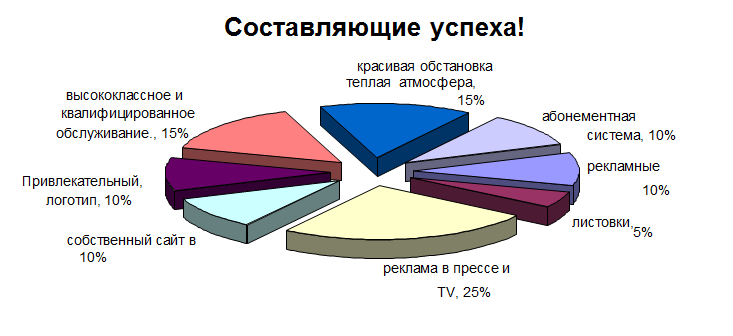Contents

The solid orange line in the image above is called %K, and the blue line is the 3-period moving average of the %K curve. The stochastic oscillator indicator was invented in 1950 by American stock analyst George Lane. Finally, you can use the Stochastic Oscillator to find divergences. A divergence is when the price of an asset is rising while the indicator is falling.

- This means the stochastic oscillator will continue to generate poor or “false” signals when markets are trading in choppy or range-bound conditions.
- This line is used to show the longer-term trend for current prices, and is used to show the current price trend is continuing for a sustained period of time.
- Dr. Lane suggests using 80 as the overbought and oversold zones.
- You just check the total distance of the range between the highest high and the lowest low.
Instead, in technical analysis, they look at charts and use various technical indicators to help them predict. If the trader’s objective is to “buy low, sell high,” trading on false signals often leads to the opposite scenario. For example, if a stock with an overbought reading reverses, might that reversal indicate a small “dip,” a larger correction, or a longer-term downtrend? It’s hard to tell, especially if you’re using stochastics alone. But there are indicators designed to point out potential market turning points. As an investor, your job is to determine the quality of those readings and decide which signals might be favorable for your strategy.
Stochastic Oscillator in Crypto Trading Explained
If both the main and signal curves are above the zero line , the market is overbought; if below, the market is oversold. This way the user can always have a better understanding of the overbought and oversold levels of the market. A stochastic oscillator is a technical charting indicator that enables users to gauge the momentum of the underlying price action.
It’s a sign that the rise slows down, and the price trend reverses down. Generally, a sell position should be open when the line breaks the 80% level back from the top, where the last closing price is, and follows the downward direction. As a trading tool, the stochastic indicator is used to estimate when the price of an asset may be overbought or oversold. By signaling these levels, the oscillator indicates when prices may be due for a reversal, which helps traders identify the best time and price to buy or sell an asset.
In a similar vein, oversold readings are not necessarily bullish. Securities can also become oversold and remain oversold during a strong downtrend. Closing levels consistently near the bottom of the range indicate sustained selling pressure. It is, therefore, important to identify the bigger trend and trade in the direction of this trend.

This difference is what creates transaction signals for traders. An oscillator is a tool that creates high and low bands in between two extreme values, with an indicator that fluctuates inside these bounds to determine the trend. Fibonacci Retracement indicator MA Channels FIBO. Secrets of successful trading with Fibonacci lines.
Band Sell Trigger
Therefore, it is best used along with other https://business-oppurtunities.com/ indicators, rather than as a standalone source of trading signals. Therelative strength index and stochastic oscillator are both price momentum oscillators that are widely used in technical analysis. While often used in tandem, they each have different underlying theories and methods. The stochastic oscillator is predicated on the assumption that closing prices should move in the same direction as the current trend.
In stock trading, market participants use two contrasting types of analysis. Fundamental analysis examines market news, economic/social/political forces, and earnings data to predict how an asset’s price will move. Technical analysis, on the other hand, uses charts and various technical indicators to forecast market conditions.
But I think it would be best to use it together with other indicators like candle stick patterns, moving averages, support and resistance, and the like. A bear trade setup ensues when the stochastic indicator makes a lower low. Yet, the instrument’s price makes a higher low, indicating that selling pressure is mounting as the security’s price may fall even more. As a result, traders often look to place a sell trade after a brief rebound in the price.
Combining it with other what do i want to be when i grow up will give you more meaningful signals and improve your trades’ overall quality. A great way to get entry and exit signals from the stochastic oscillator is to use crossovers. You should note that the stochastic indicator may offer a divergence signal a while before price action changes direction. Divergence alone should never be the reason to enter a trade. Whenever you’re acting on a signal from the stochastic indicator, always confirm with another technical analysis indicator.

The stochastic indicator can also help you identify bull and bear setups in anticipation of a future reversal. Since the stochastic oscillator is range-bound, it’s beneficial for generating overbought and oversold signals. Both indicators help determine when the asset is overbought and oversold as well as where its highest and lowest price is located. Both tools, even with ideal settings, provide false signals. The stochastic is an oscillator of the technical analysis that reflects the price impulse regarding a chosen period.
The stochastic oscillator is range-bound, meaning it is always between 0 and 100. This makes it a useful indicator of overbought and oversold conditions. Traditionally, readings over 80 are considered in the overbought range, and readings under 20 are considered oversold.
The Ultimate Guide to Using Stochastics
Readings below 20 indicate oversold conditions in the market. A sell signal is generated when the oscillator reading goes above the 80 level and then returns to readings below 80. Conversely, a buy signal is indicated when the oscillator moves below 20 and then back above 20. Overbought and oversold levels mean that the security’s price is near the top or bottom, respectively, of its trading range for the specified time period. The Stochastic Oscillator is a very popular technical analysis tool, available on almost all trading platforms and used by many traders all over the world. Similarly, the Stochastic determines where the price closed in relation to a specific price range over a chosen time period.
The stochastic oscillator is included in most charting tools and can be easily employed in practice. The standard time period used is 14 days, though this can be adjusted to meet specific analytical needs. The stochastic oscillator is calculated by subtracting the low for the period from the current closing price, dividing by the total range for the period, and multiplying by 100. Stochastics measure the momentum, not the range of the price movement. This inconsistency is what turned off many followers of stochastic oscillators. The argument that the oscillations were often too choppy and the range of the oscillations were not proportionate to the price moves of the underlying stock .

You’ll look for trading setup on the lower timeframe – to go short. You want to make sure the daily timeframe is not in a downtrend with Stochastic overbought. Because if you want to find high probability trades, then you want to be trading with the higher timeframe trend — and not against it. But it can help you anticipate where the pullback might end, so you can better time your entry and trade with the trend.
I am a beginner to stock market and was studying RSI and stochastic to go on short trading. Please suggest if I can go with a 15 minute time frame and see the stochastic indicator to find the entry and exit level.. On the bearish side, only readings of 15 and below are interpreted as indicated oversold conditions.
A combination of the stochastic indicator %К and its moving average, named D , became the best option that can spot when the asset is overbought or oversold. Once, while observing the price changes, he noticed that there was not a trend but a reciprocating movement that prevailed on the market. So, he developed an indicator that would catch these dynamics and signal reversals in both directions. The stochastic indicator was based on the price bar’s major parameters – closing, high, and low prices.
Readings above 80 for the 20-day Stochastic Oscillator would indicate that the underlying security was trading near the top of its 20-day high-low range. Readings below 20 occur when a security is trading at the low end of its high-low range. The Stochastic Oscillator measures the level of the close relative to the high-low range over a given period of time. Assume that the highest high equals 110, the lowest low equals 100 and the close equals 108. The high-low range is 10, which is the denominator in the %K formula.
That’s why this momentum indicator is often used with other indicators for more accurate signals. In the following sections, we will explain the specifics of the stochastic oscillator signal types, methods of interpretation, and detection. The Stochastic Oscillator is used by beginners and advanced traders alike. It is useful in both trending and ranging markets as it produces a varied range of signals.
There is a long-term upward trend on the daily chart; the price moves up and is above the EMA , while the EMA is above EMA , which, in turn, is above EMA . On the chart, you can see the shooting star’s formation with the simultaneous crossing of the indicator lines in the overbought zone . As we can see from the chart, the trade was successfully closed at the take profit level. Most importantly, let’s define the leading trend of the price movement. We will do it using the stochastic with 21, 7, and 7 parameters.
How to Trade on the Divergence Signal
Still, results may vary on other timeframes and trading instruments. You can compare any type of stochastic indicator using a free demo account right now onLiteFinance in several clicks without registering. It’s used to smooth the %K curve, making it more flowing without market noise. In other words, initial %K is calculated with an averaging coefficient. On the chart, the bar with which we calculate the stochastic indicator is marked with green. The green line highlights the highest price for the last three candles – 1,17994.
If there is a reading over 80, the market would be considered overbought, while a reading under 20 would be considered oversold conditions. You don’t need to calculate the indicator manually as it’s automatically implemented and calculated on trading platforms – for instance, on the TickTrader platform. Still, it may be useful to know how the indicator is built so you understand which settings you can use for your strategy. The Stochastic oscillator is another technical indicator that helps traders determine where a trend might be ending. So, when it’s at overbought level , it means the market has strong bullish momentum.